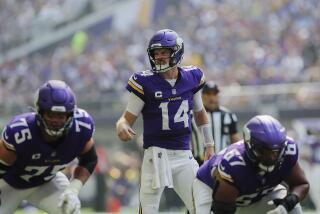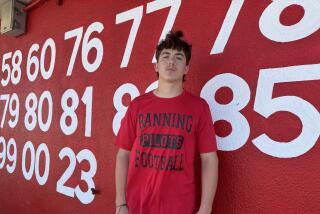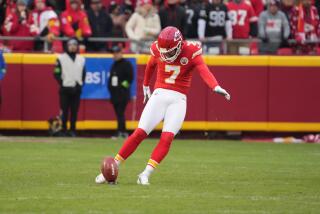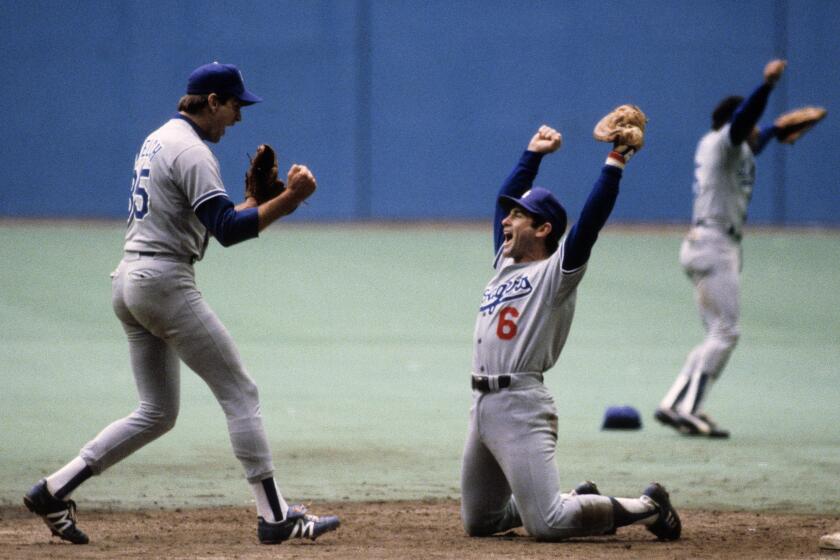No Snap Making Switch
Even in the age of the mobile passer, college quarterbacks who are two-way threats can be positional misfits in the NFL.
This year, Indiana’s Antwaan Randle El and North Carolina’s Ronald Curry are considered receivers by most teams. Clemson’s Woodrow Dantzler was given a look at running back in the Senior Bowl. Eric Crouch, the Heisman winner from Nebraska, is thought of as either a strong safety or a running back. And Ohio State’s Steve Bellisari probably will be tried at free safety.
Drafting a quarterback to play safety is like hiring a lawyer to remove your tonsils. A major learning curve is to be expected. Nolan Cromwell made the switch, but among those who have struggled include Scott Frost, Rex Kern and Jack Mildren.
“Defensive players have to be reactive,” says one front office man who took part in drafting Frost out of Nebraska. “Frost is far better with the ball in his hands than when he has to see the play, break down, change direction and make the play. He missed a million tackles.”
It helps when the player gets a head start by making the position switch in college, as Tampa Bay’s John Lynch did while at Stanford.
The change will be much more problematic for Crouch, who has been strictly a quarterback and is resisting the idea of playing another position. Crouch, however, runs a lot better than he throws. His three-interception performance in the Hula Bowl last Saturday did not enhance his chances of getting a look at quarterback.
There are more examples of college quarterbacks who were successful switching to running back or receiver. Among them are Drew Pearson, Tony Martin, Brian Mitchell, Freddie Solomon, Ed Podolak and Bert Emanuel.
But it’s not like an offensive transition is simple. Playing running back at the Senior Bowl, Dantzler looked like a sports car in a blizzard. Dantzler argues that quarterback is his best position, and he has the numbers to back him up. At Clemson, he was the first player in NCAA history to pass for 2,000 yards and rush for 1,000 in the same year.
Scouts say he’s too short at 5-10 and question his accuracy. But Atlanta’s Michael Vick is only two inches taller, and he had accuracy issues, too. Like Vick, Dantzler has a top-rate arm and extraordinary running ability. If Vick can be the first pick in the draft, there is no reason why Dantzler can’t be a mid-round pick as a quarterback.
Accuracy is an issue with each of the positional misfits this year. “All of them are going to have to show people they can throw the ball better than they did in college,” says Bills General Manager Tom Donahoe, who drafted Kordell Stewart to play quarterback for the Steelers when others were thinking of switching Stewart’s position. “People questioned Kordell’s accuracy, too, but we didn’t see that.”
Randle El believes NFL teams wouldn’t be questioning his accuracy if he were taller than 5-9. He might be right. One scout says Randle El would be a top five pick if he were six inches taller.
Even though Randle El is almost dainty by quarterback standards, he has long arms (301/2 inches) and big hands (971/4 inches from the tip of the thumb to the tip of the pinkie) that, in effect, make him play bigger. He was plenty tall at Indiana, where he threw for more yards than Peyton Manning did at Tennessee. He also was the only big-time college player ever to throw 40 touchdown passes and score 40 times.
Part of the reason he isn’t considered a quarterback by most NFL teams is there is no one who has been successful in the NFL that he compares with. An offensive coordinator says 5-10 Doug Flutie is faster and has a stronger arm.
Randle El ran the equivalent of a 4.75 40-yard dash in the spring. But that clocking is deceptive. Randle El might not have track speed, but he has a quick burst that enables him to separate. On tape, Randle El appears to be one of the faster players on the field.
What works against Randle El and all of these quarterbacks is they won’t fit into most offenses being run in the NFL. If a team is going to draft Randle El as a quarterback, it must adapt to him by changing its offense. That would take a tremendous commitment and an unwavering belief.
Another possibility, the most intriguing, would be to use Randle El as a “slash”-type player, capable of taking snaps or handoffs, catching passes or punts. “You could create a package for him that would take advantage of his special traits,” Bears General Manager Jerry Angelo says.
Randle El played some receiver at Indiana, and he looked like a natural at the position during the Senior Bowl, even earning MVP honors. He was much less impressive playing quarterback at the East-West Shrine game.
Each case is unique, but the best chance for most of these players probably is to remain at the position that got them this far. “History tells you most of them don’t make it when they switch,” says Angelo, who has studied the phenomenon. “It’s too much to make a projection at the highest level.”
What makes it even more difficult is the transient nature of the NFL. “We can’t keep players around forever like we used to,” Texans G.M. Charley Casserly says. “So a projection has to play sooner. That works against him and us.”
There is a place for some of these gifted players in the NFL -- it’s just a matter of defining it.
More to Read
Go beyond the scoreboard
Get the latest on L.A.'s teams in the daily Sports Report newsletter.
You may occasionally receive promotional content from the Los Angeles Times.










